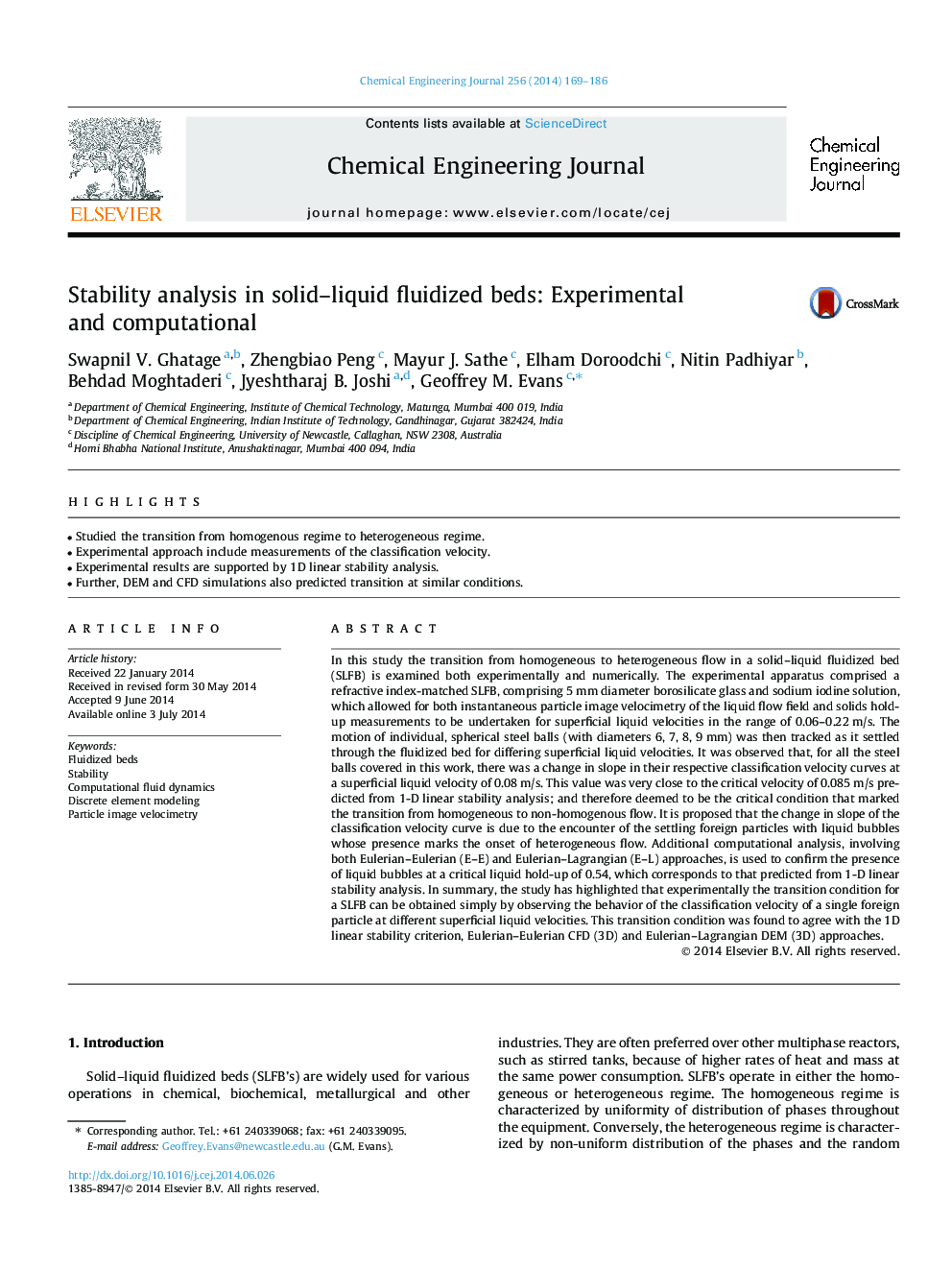| کد مقاله | کد نشریه | سال انتشار | مقاله انگلیسی | نسخه تمام متن |
|---|---|---|---|---|
| 147024 | 456384 | 2014 | 18 صفحه PDF | دانلود رایگان |

• Studied the transition from homogenous regime to heterogeneous regime.
• Experimental approach include measurements of the classification velocity.
• Experimental results are supported by 1D linear stability analysis.
• Further, DEM and CFD simulations also predicted transition at similar conditions.
In this study the transition from homogeneous to heterogeneous flow in a solid–liquid fluidized bed (SLFB) is examined both experimentally and numerically. The experimental apparatus comprised a refractive index-matched SLFB, comprising 5 mm diameter borosilicate glass and sodium iodine solution, which allowed for both instantaneous particle image velocimetry of the liquid flow field and solids hold-up measurements to be undertaken for superficial liquid velocities in the range of 0.06–0.22 m/s. The motion of individual, spherical steel balls (with diameters 6, 7, 8, 9 mm) was then tracked as it settled through the fluidized bed for differing superficial liquid velocities. It was observed that, for all the steel balls covered in this work, there was a change in slope in their respective classification velocity curves at a superficial liquid velocity of 0.08 m/s. This value was very close to the critical velocity of 0.085 m/s predicted from 1-D linear stability analysis; and therefore deemed to be the critical condition that marked the transition from homogeneous to non-homogenous flow. It is proposed that the change in slope of the classification velocity curve is due to the encounter of the settling foreign particles with liquid bubbles whose presence marks the onset of heterogeneous flow. Additional computational analysis, involving both Eulerian–Eulerian (E–E) and Eulerian–Lagrangian (E–L) approaches, is used to confirm the presence of liquid bubbles at a critical liquid hold-up of 0.54, which corresponds to that predicted from 1-D linear stability analysis. In summary, the study has highlighted that experimentally the transition condition for a SLFB can be obtained simply by observing the behavior of the classification velocity of a single foreign particle at different superficial liquid velocities. This transition condition was found to agree with the 1D linear stability criterion, Eulerian–Eulerian CFD (3D) and Eulerian–Lagrangian DEM (3D) approaches.
Journal: Chemical Engineering Journal - Volume 256, 15 November 2014, Pages 169–186